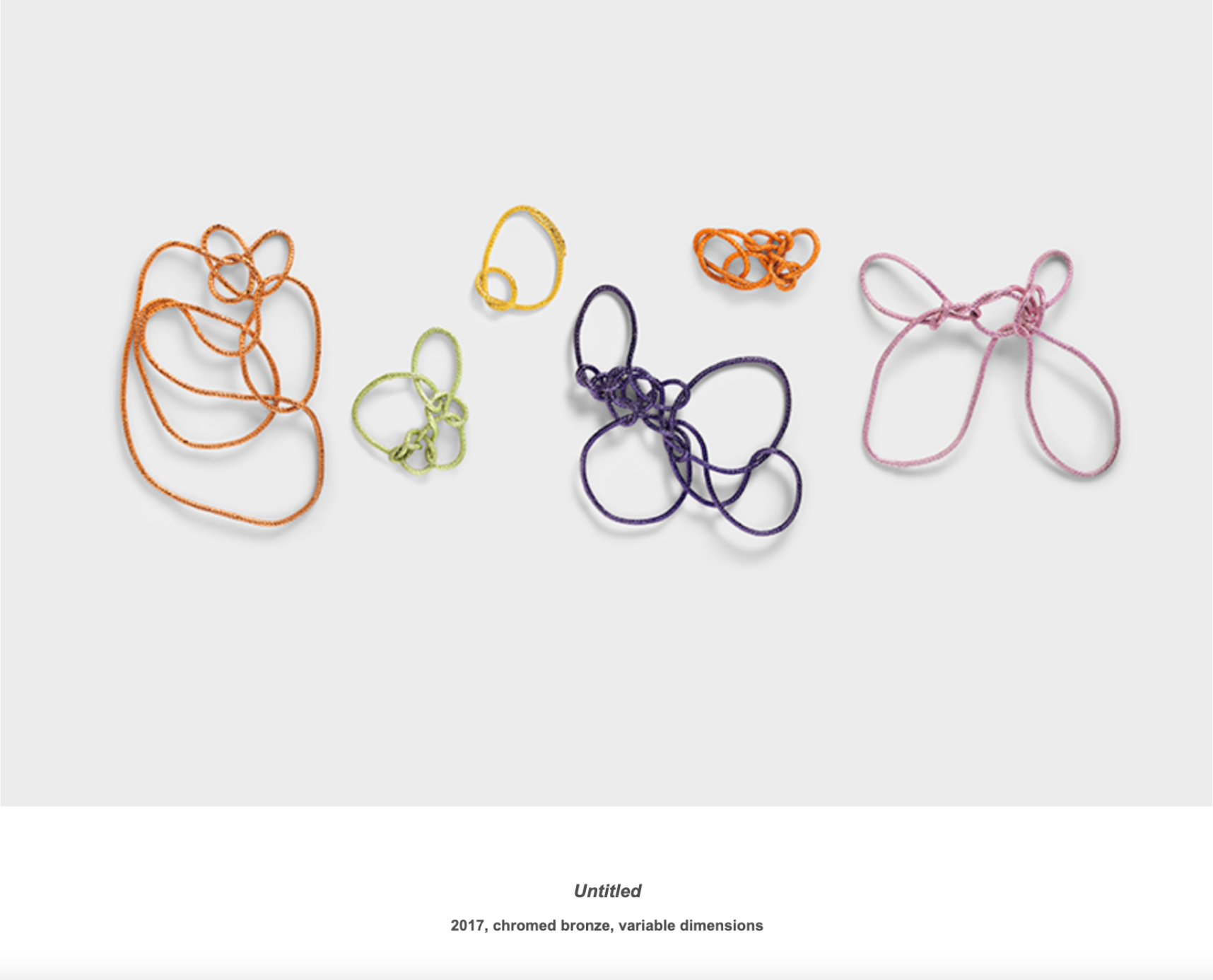
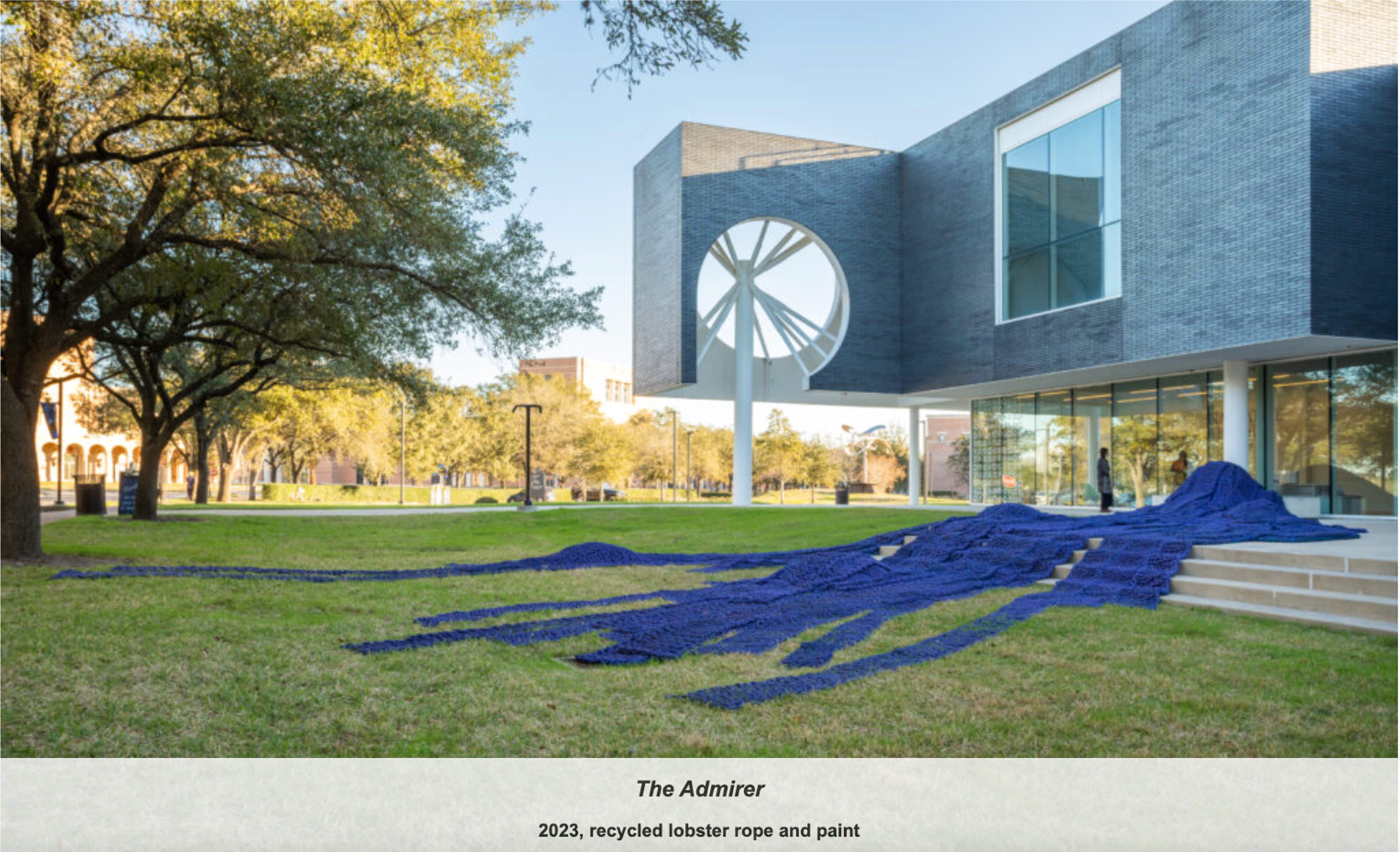
Orly Genger
Orly Genger is an American sculptor that works on large scale knit structures that are often layered. She has also cast rope in bronze so has similarities to me in the sense that she changes textiles that are often flexible to a solid. Her large scale sculptures often run high and across different heights like steps as shown here. I really like how she uses scale to show each individual sketch.
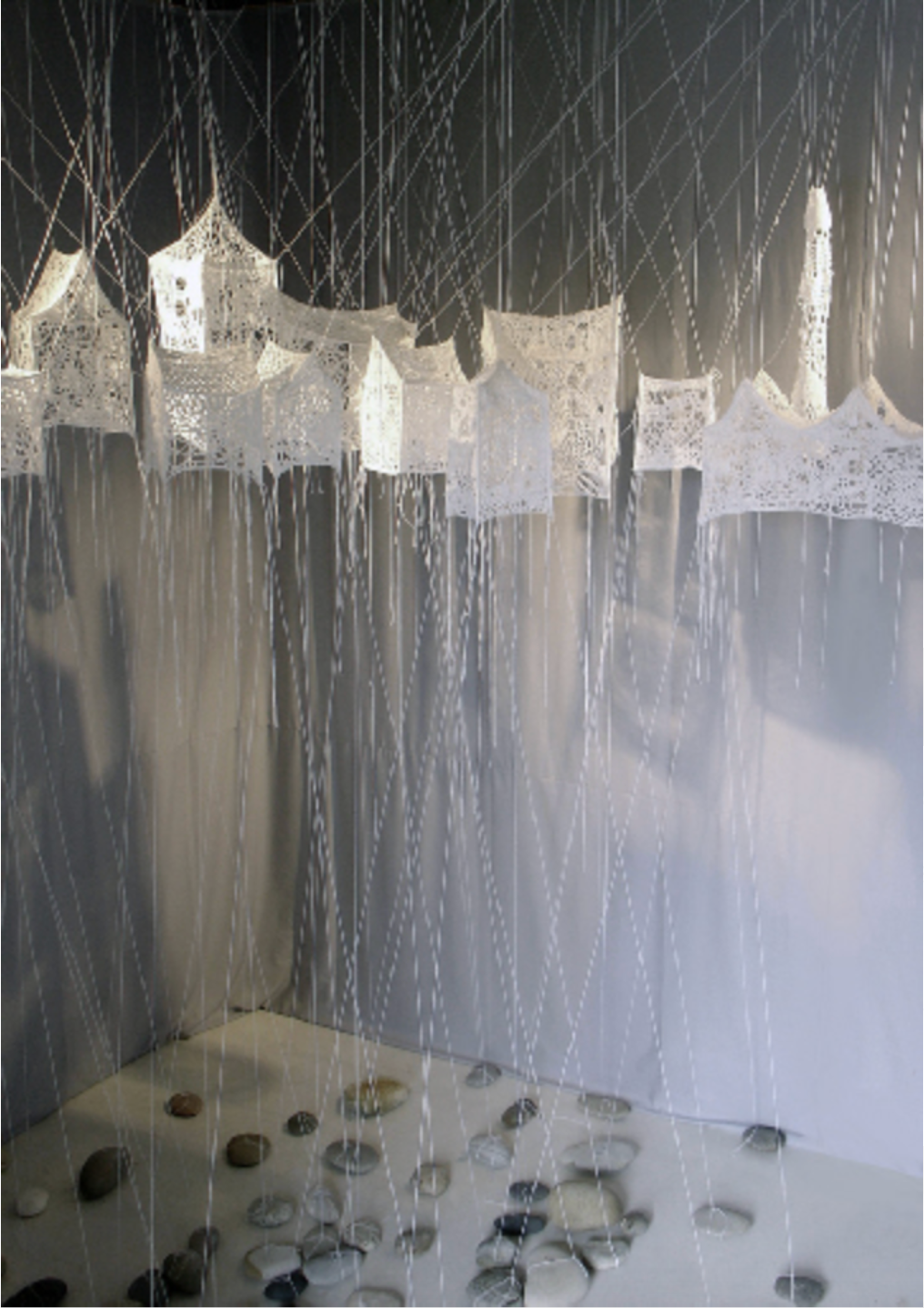
Cecile Dachary
Cecile Dachary's 'The City' is an installation consisting of white cotton structures being held down with pebbles. This mix of materials and experimenting with weight and the connection of solid and textiles I feel has correlations with my work due to me experimenting with my ceramic pieces being hung within the textiles I knit. This work I particularly like due to the 'webs' within the pieces made by the thread from each house.
Helen Martin
I have found some work into more lace knitted casting ceramic by Helen Martin. The work that she does is on a small scale and the movement of it is very linear. This contrast makes the viewer see a perfectly curved knitted square rather than making them question material or work. This makes me think about how important the way the material moves and is frozen in place effects the way it is viewed. Shadow is also utilised within the work which I like.


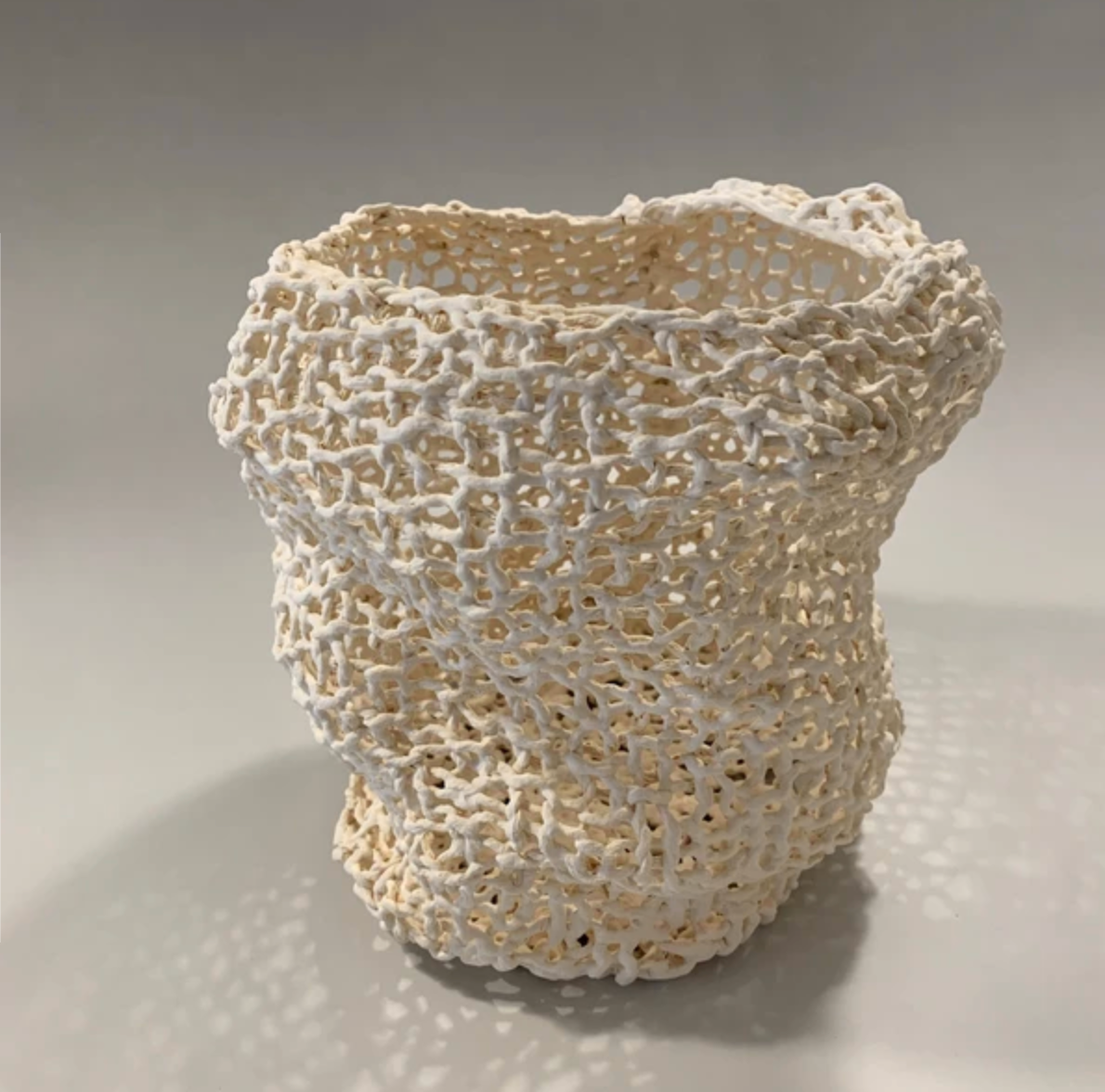
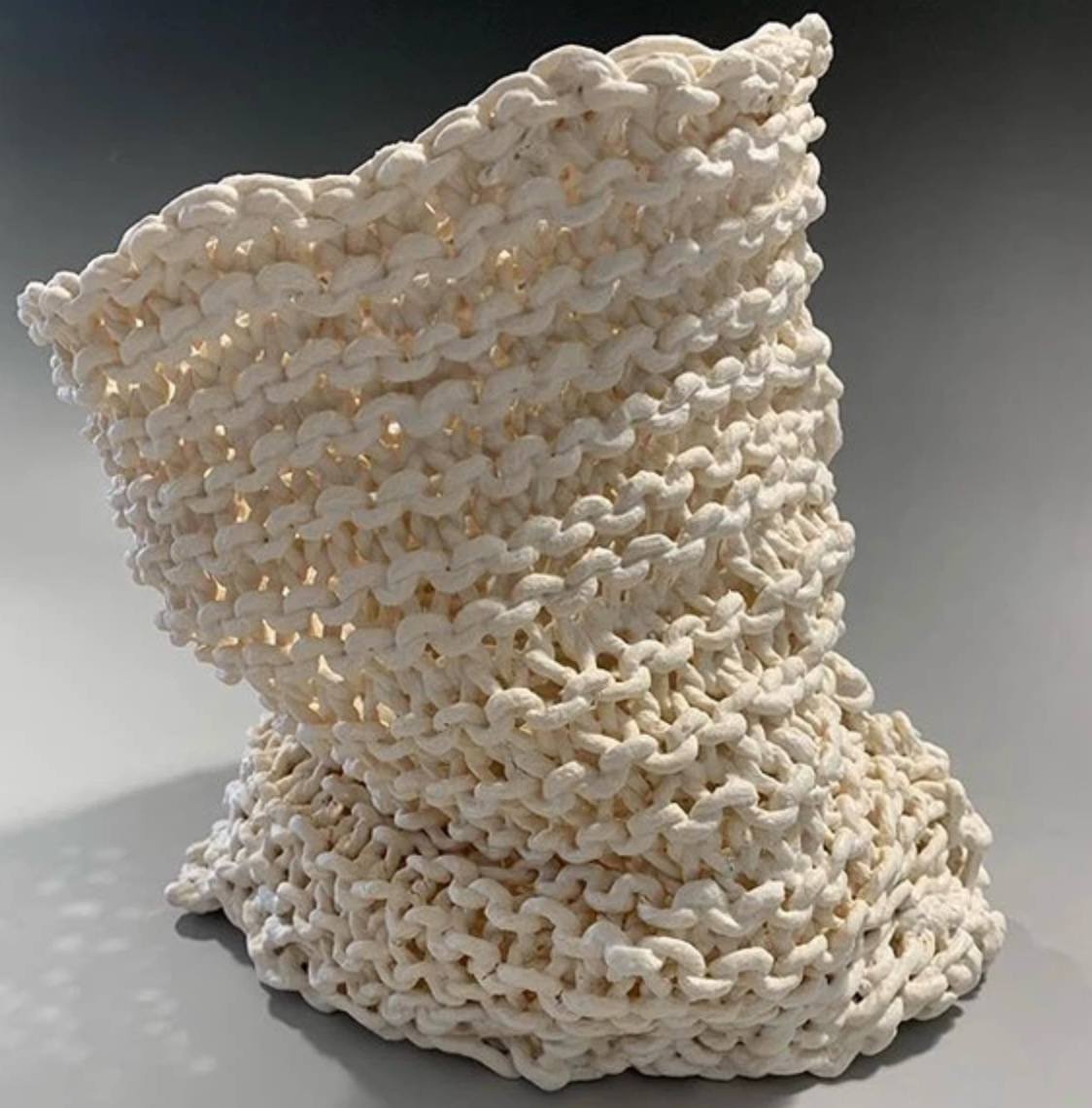
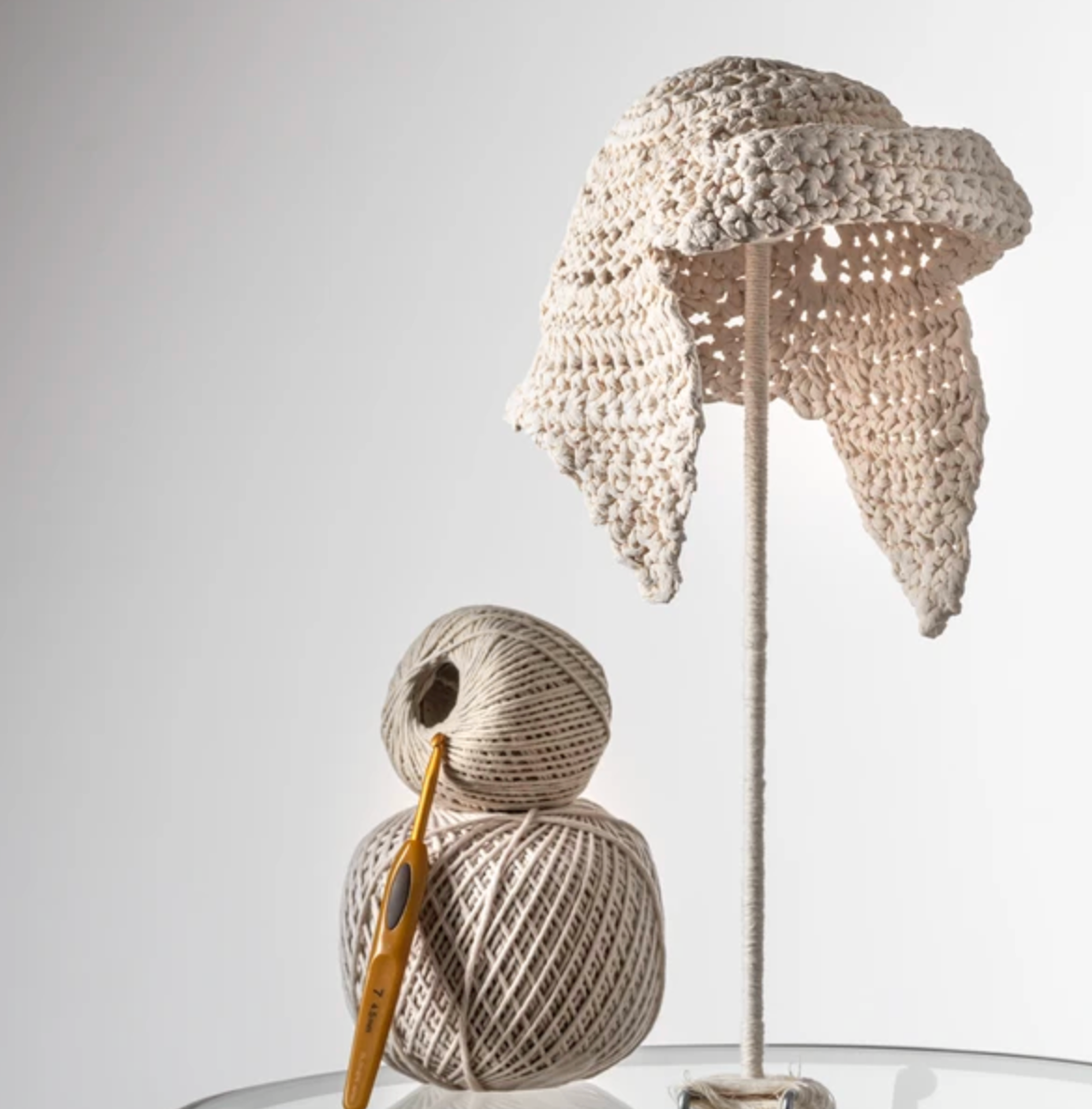
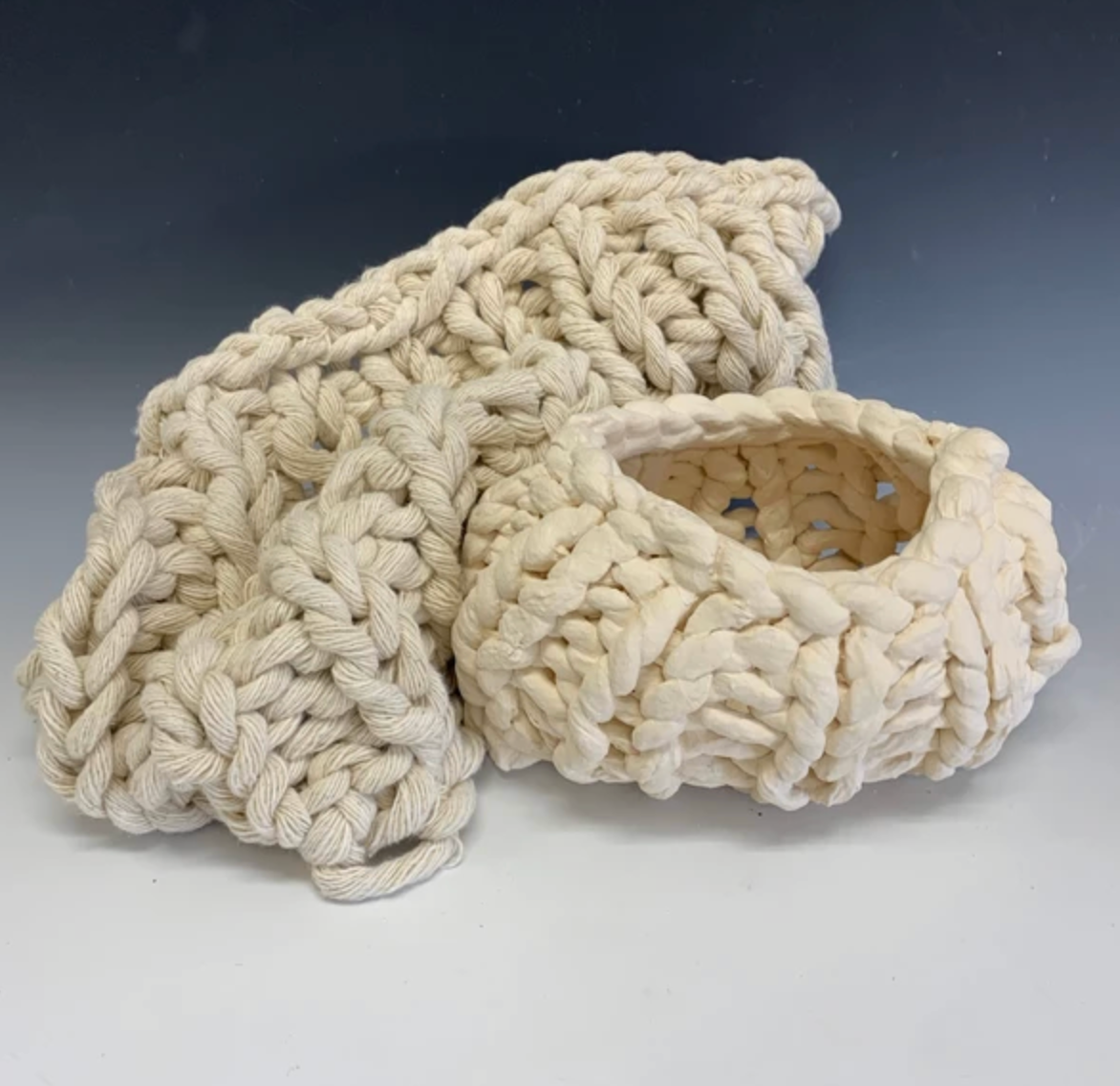
Caroline Wright
I really like the naturally occurring colour and movement within Wright's work. Wright works in knitting and crochet, however, the colour and movement shines through the work and makes it hers. The almost raffia look of it makes it seem almost naturally occurring. Some of these photos compare the knitted fibre to the ceramic knitting which asks the viewer to compare the materials.
Gayle Matthias
Matthias' pieces from 1999-2014 focuses a lot on connection and movement. Her work is formed using a mix of materials and the variety of textures that are shown throughout her pieces show the materials in different ways. The use of shards of glass pointing all in one direction or the use of curved in glass shows how glass can be manipulated in different ways. I really like this exploration of the material and to me what stands out is the way the materials move and interact with each other, they look like they are about to move at some points, even though they are still.
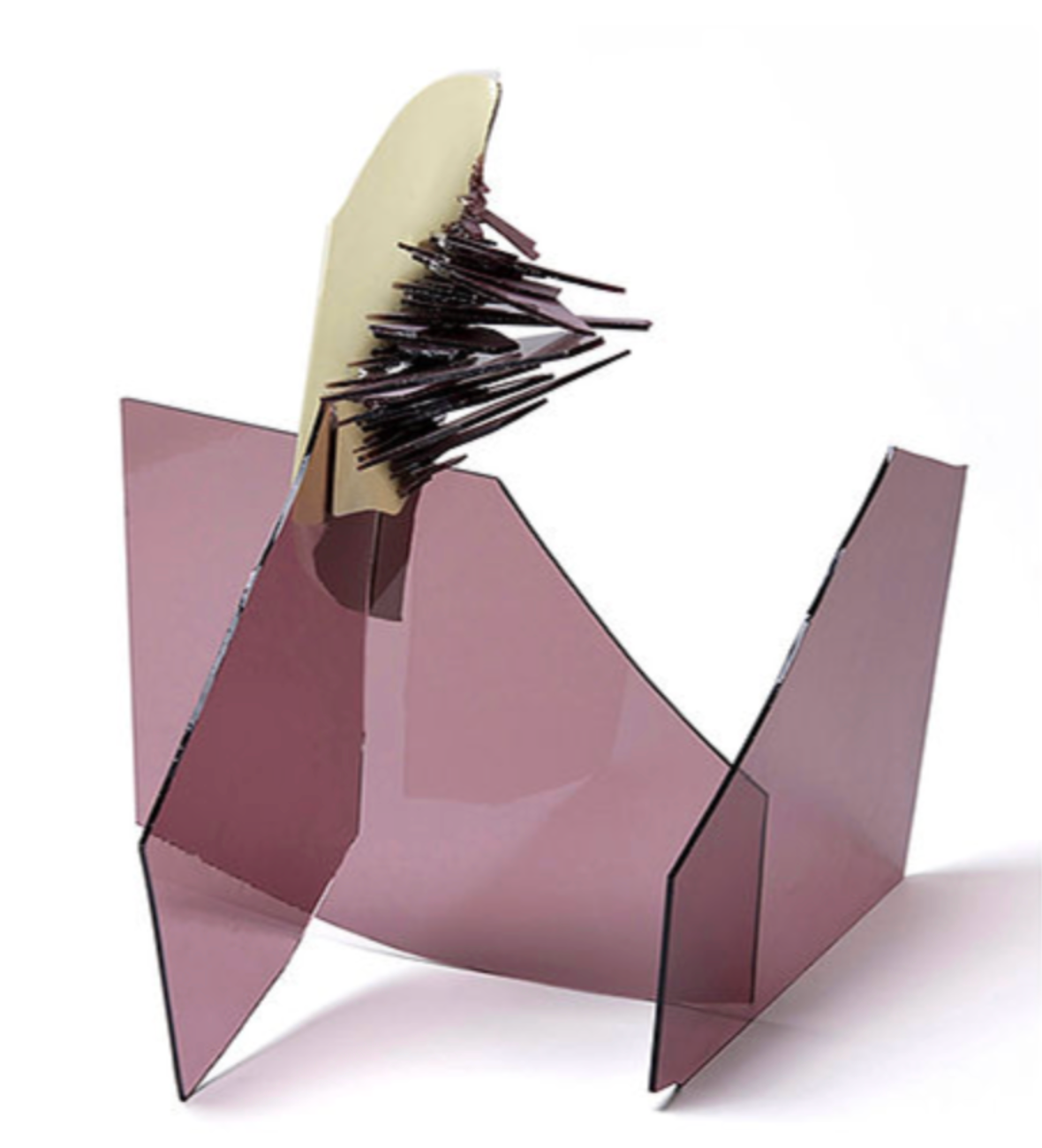
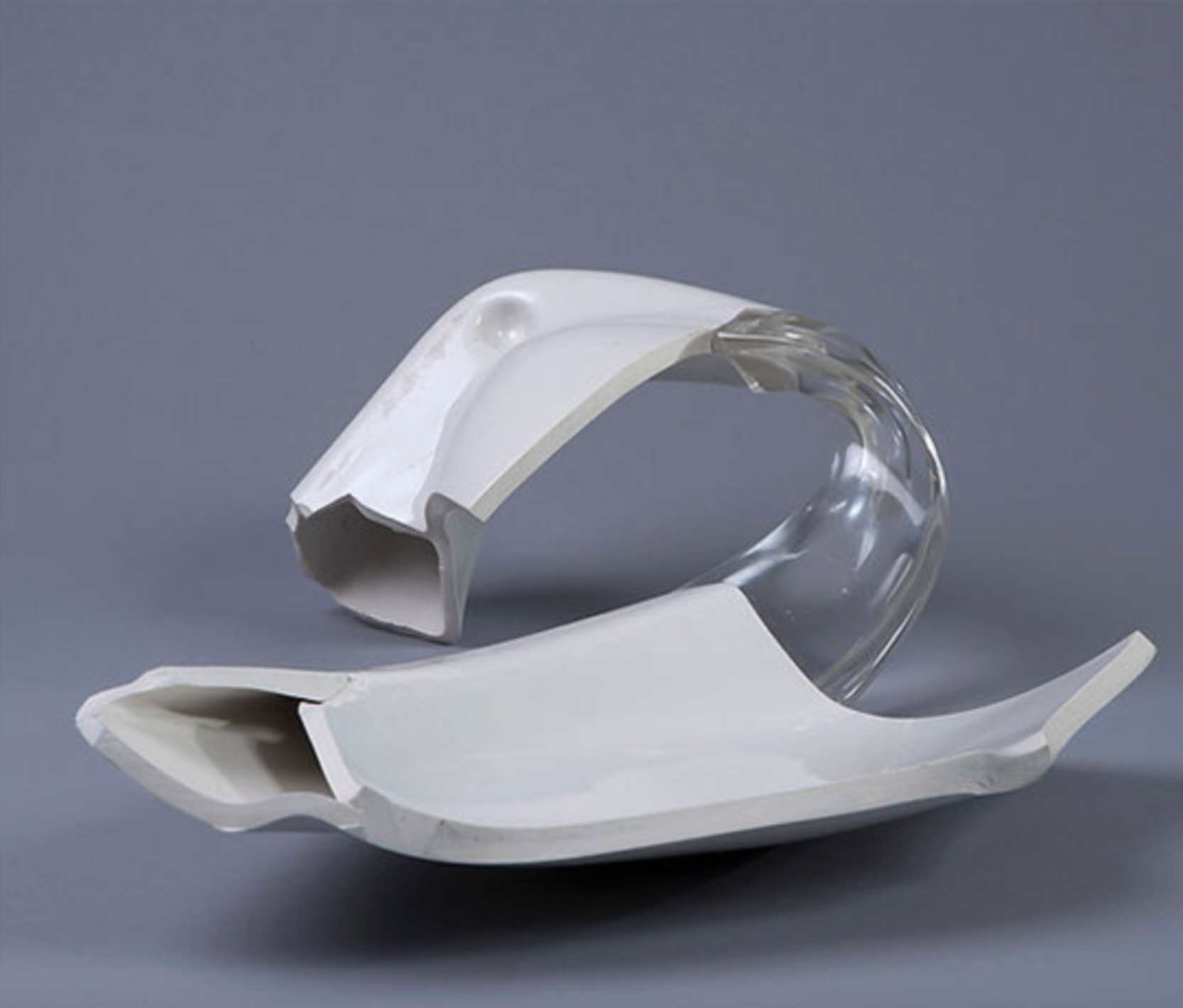
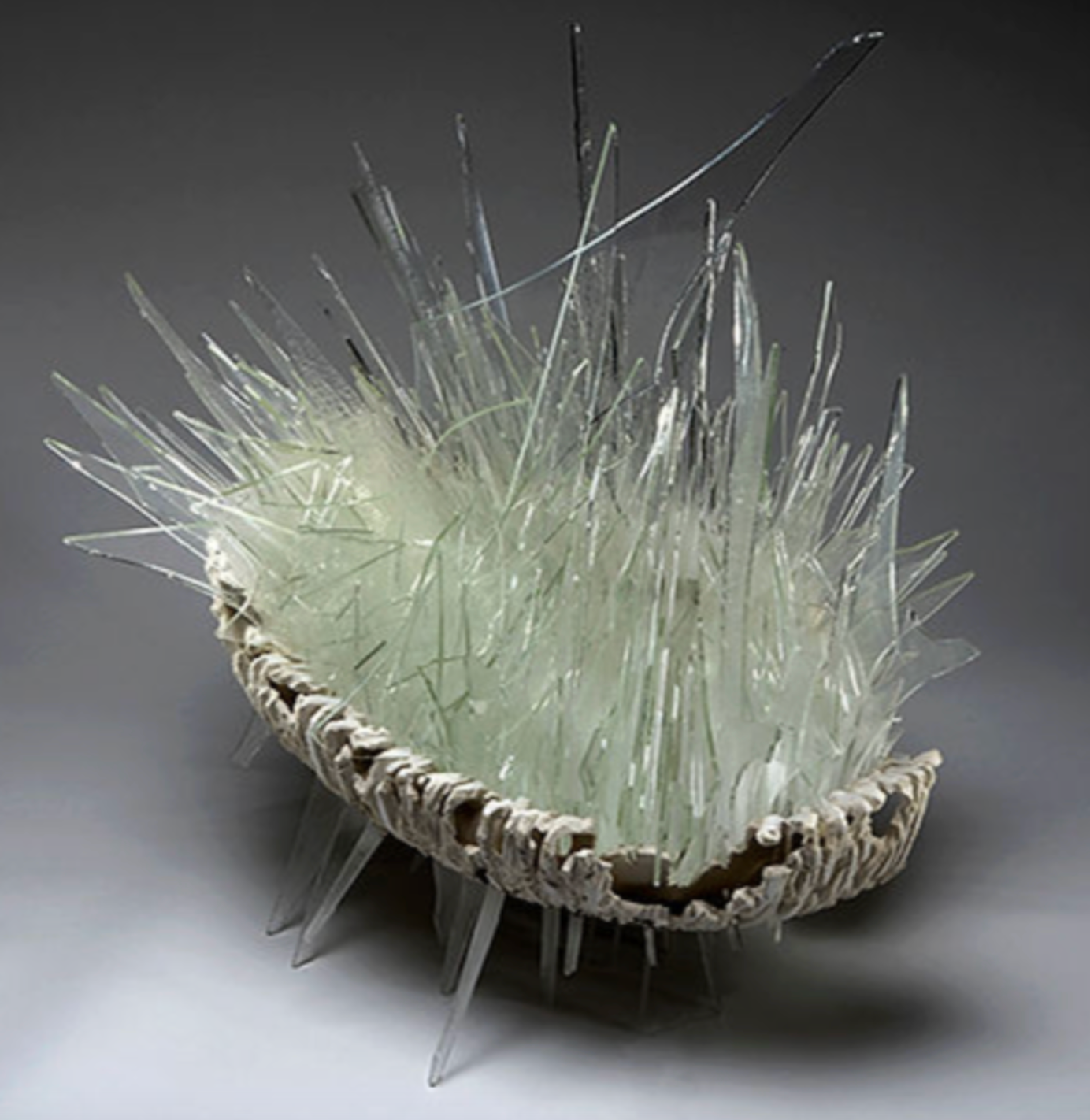
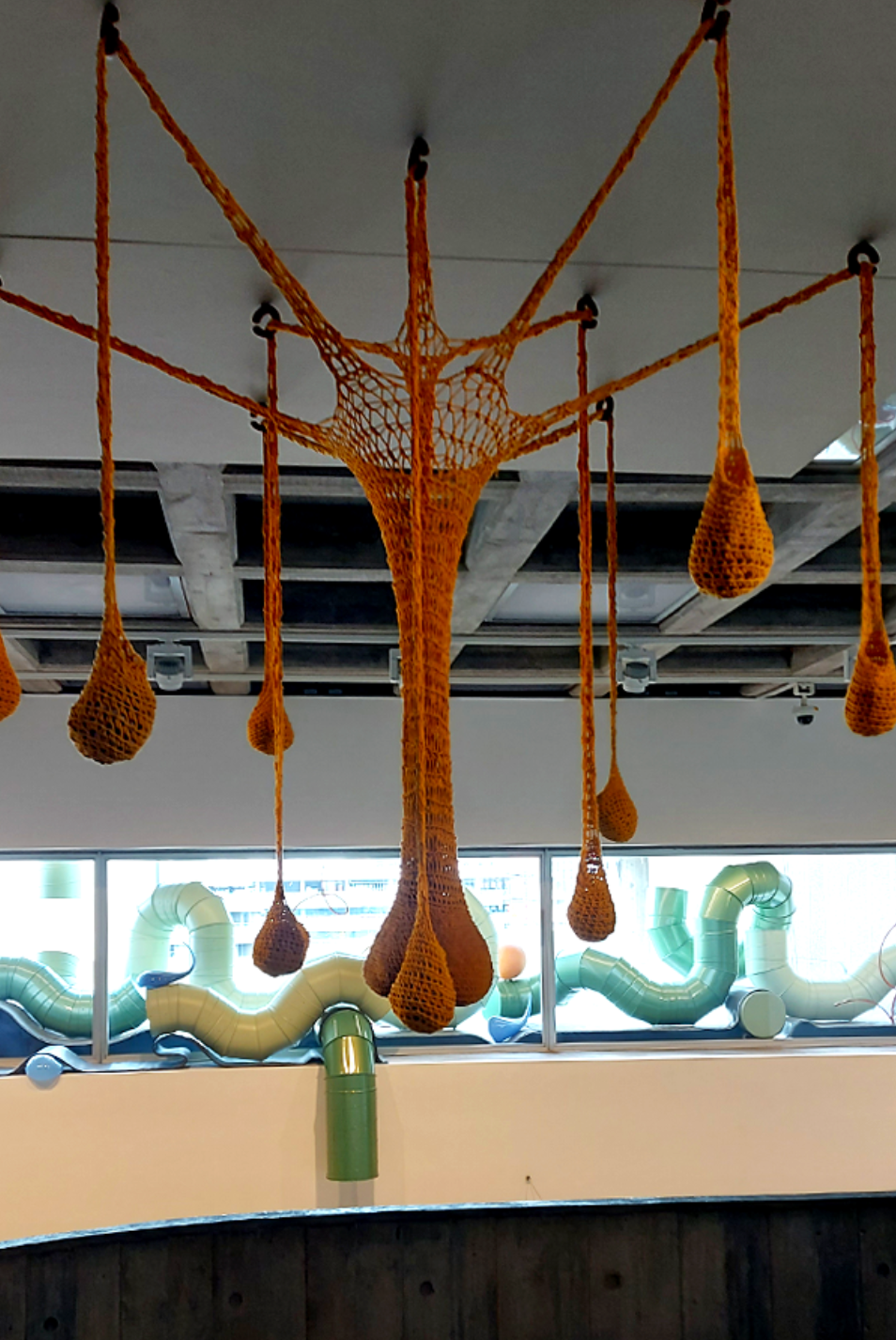
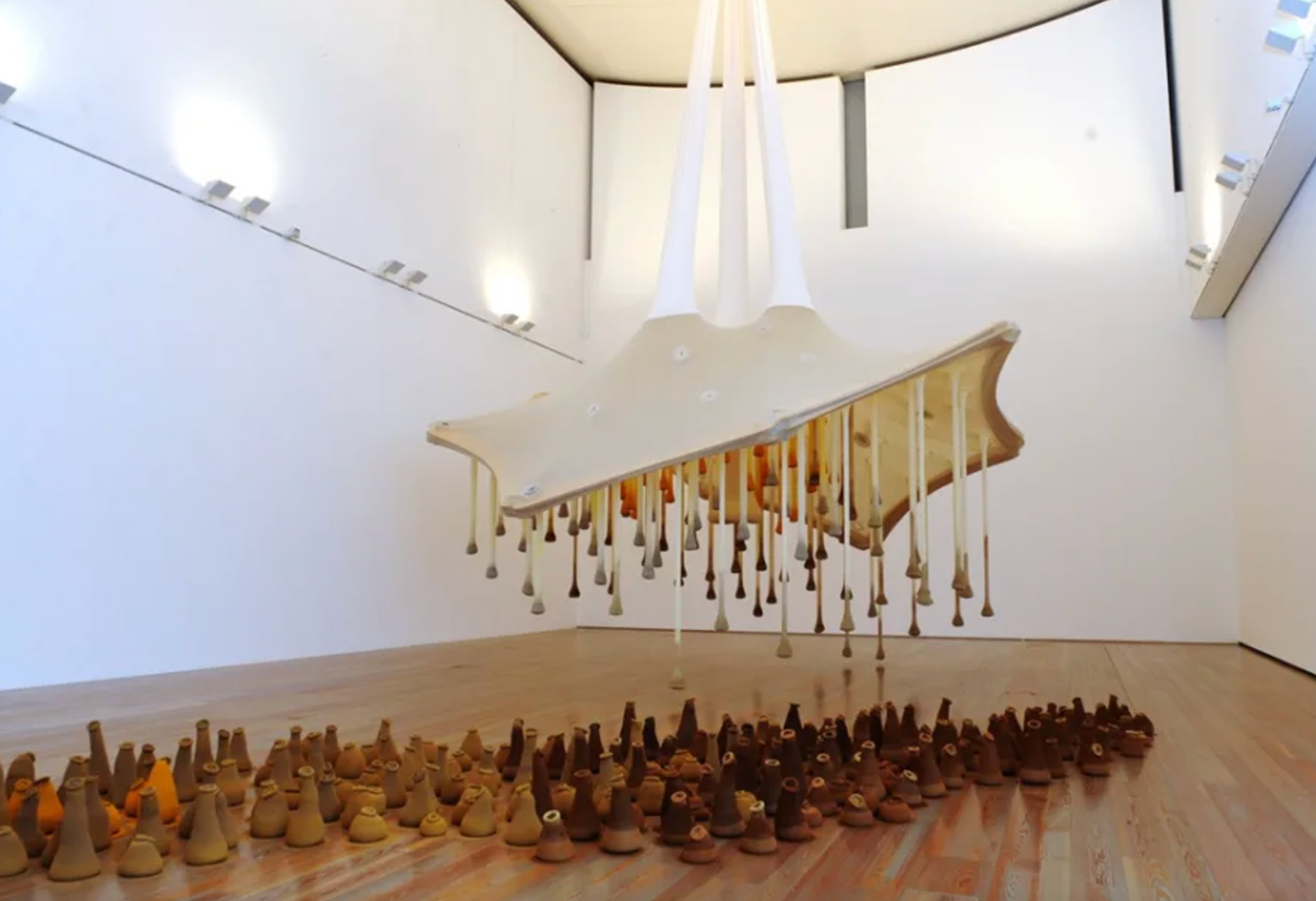
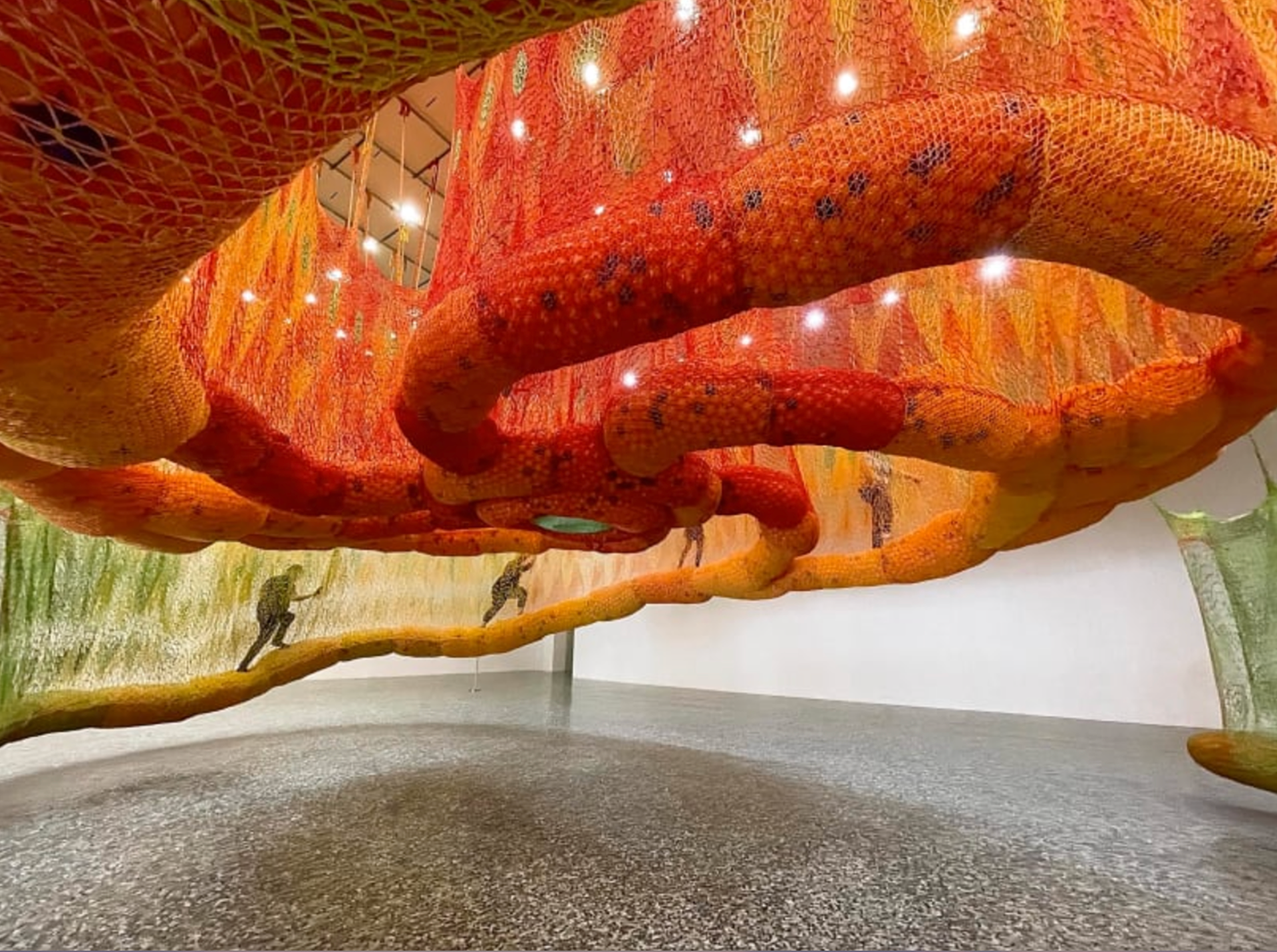
Ernesto Neto
Ernesto Neto is an artist that works with textiles to create sculptural forms. Sometimes installation and/or large scale, Neto forms come from hanging and creating different curved forms using different textile techniques. I saw the first piece at the exhibition When Forms Come Alive at the Hayward Gallery. The way that the piece hung as you came up the stairs meant that the visitors could see the bottom angles of the work as well. His work normally has crochet forms and uses colour to create eye catching pieces.
Although Neto's work is eye catching and colourful, I feel like the work can be quite gentle as well. Using curved forms and focusing on one or two bright colours makes the pieces eye catching but nor overwhelming. The use of colour and sometimes the gradient use of it feels warm instead of sudden.
Freddie Robbins
Freddie Robbins uses both machine knitting and hand knitting within her work. What I like about her work is the multiple fibres she works with, as well as the mix of materials she uses within her art. The themes and colours within her work make it more eye catching, however, her use of colour works well as you can notice the fibres more easily. I really like her use of knitting needles as a material as well, using knitting needles reminds the users of the making process involved in making the art.
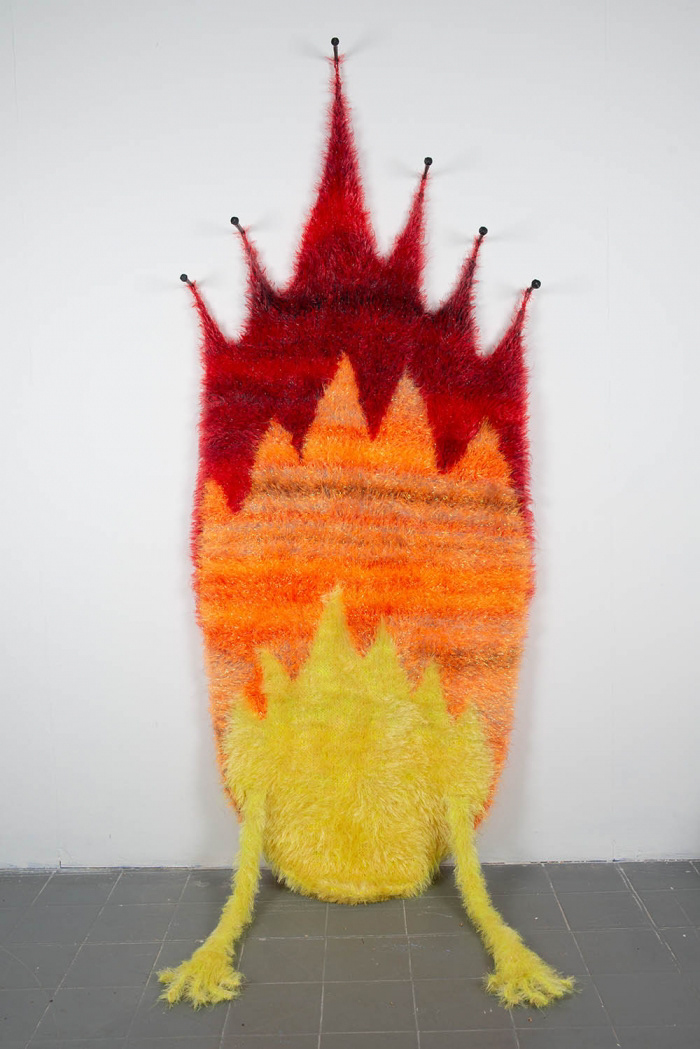
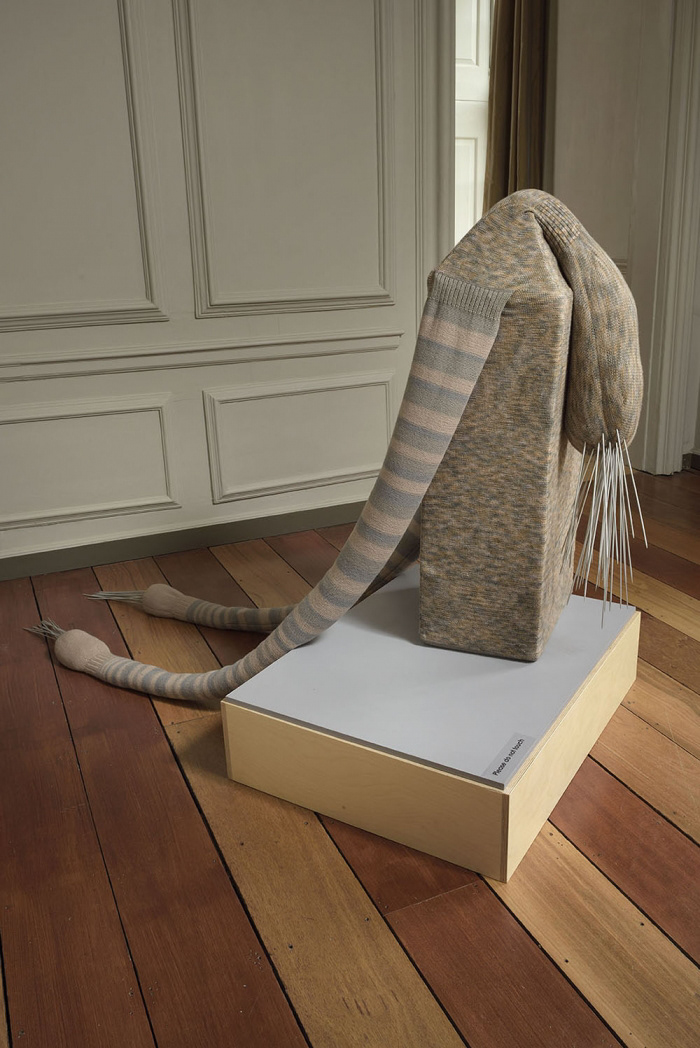

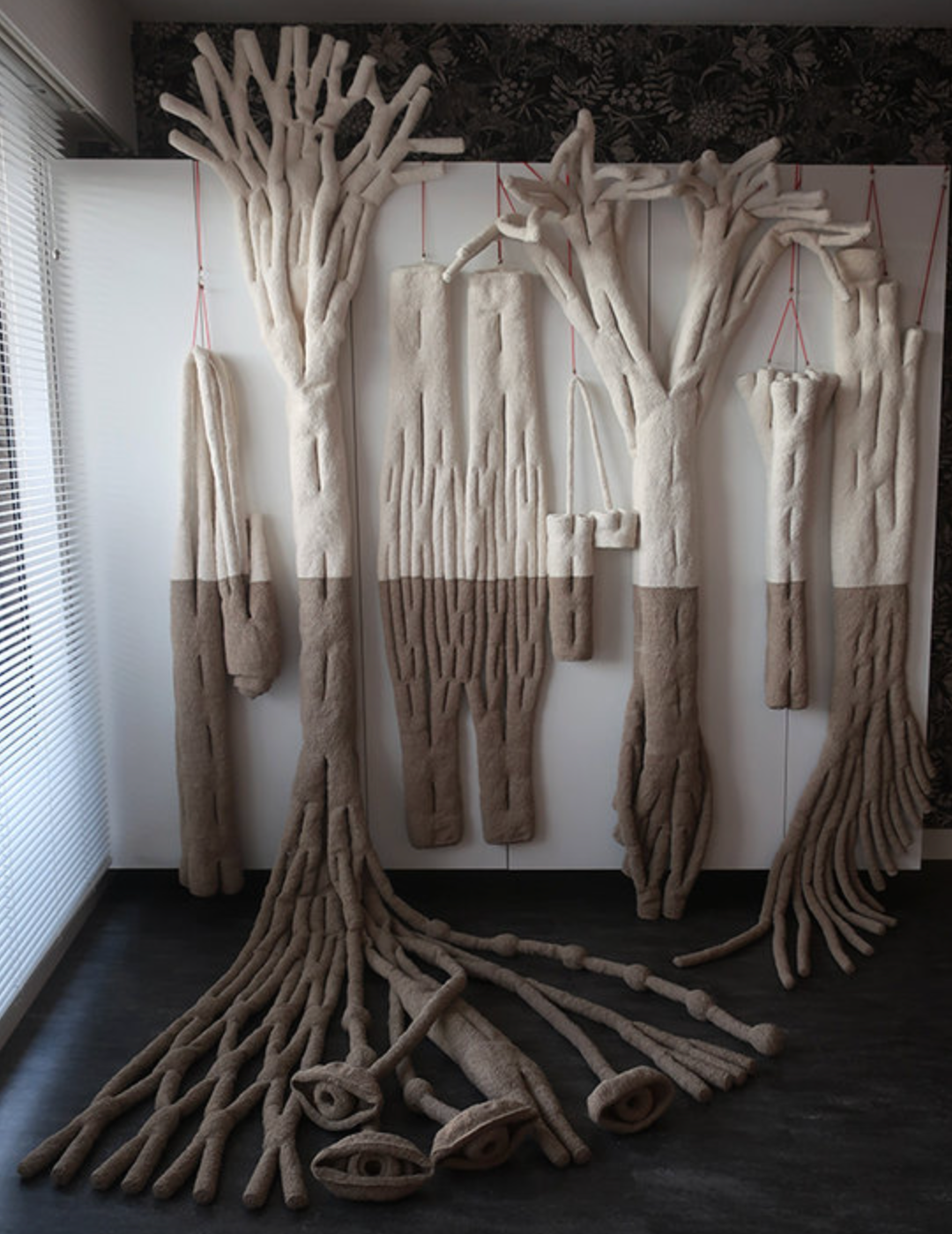
Agnès Sébyleau
Sébyleau's work is focused on using twine to create hanging forms that will normally hang and be on a fairly large scale. The natural nature of the colour of the twine also fit with the natural forms that come with the crocheted shapes. The use of brightly coloured thread sometimes alters the shape whether they tie the crocheted twine together or add more material to weigh the twine down. The use of stuffing in the piece on the bottom right makes the pieces more solid and therefore more rigid. This idea of stillness in such a flexible medium paired with the natural stone coloured twine creates a nice contrast to what the experience of touching it would be.
Daina Taimina
Daina Taimina is a crochet artist who has a background in mathematics. Taimina's work is based on geometry and her work often features hyperbolic planes. Her work features multiple sizes of hyperbolic planes and she uses a range of fibres to create different effects. Some pieces go into their form naturally whereas others don't, however, there seems to always be a slight difference between each pieces.
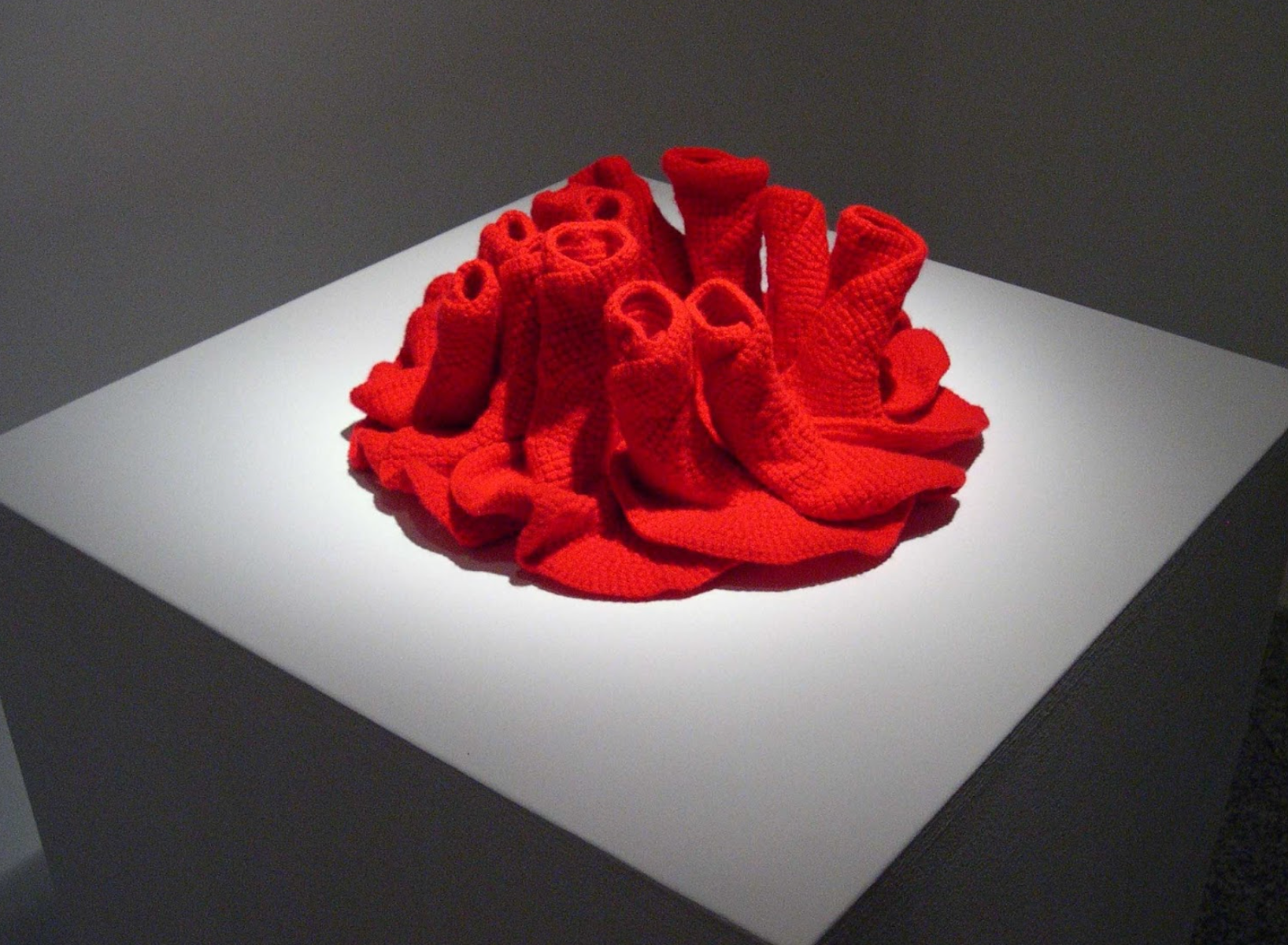
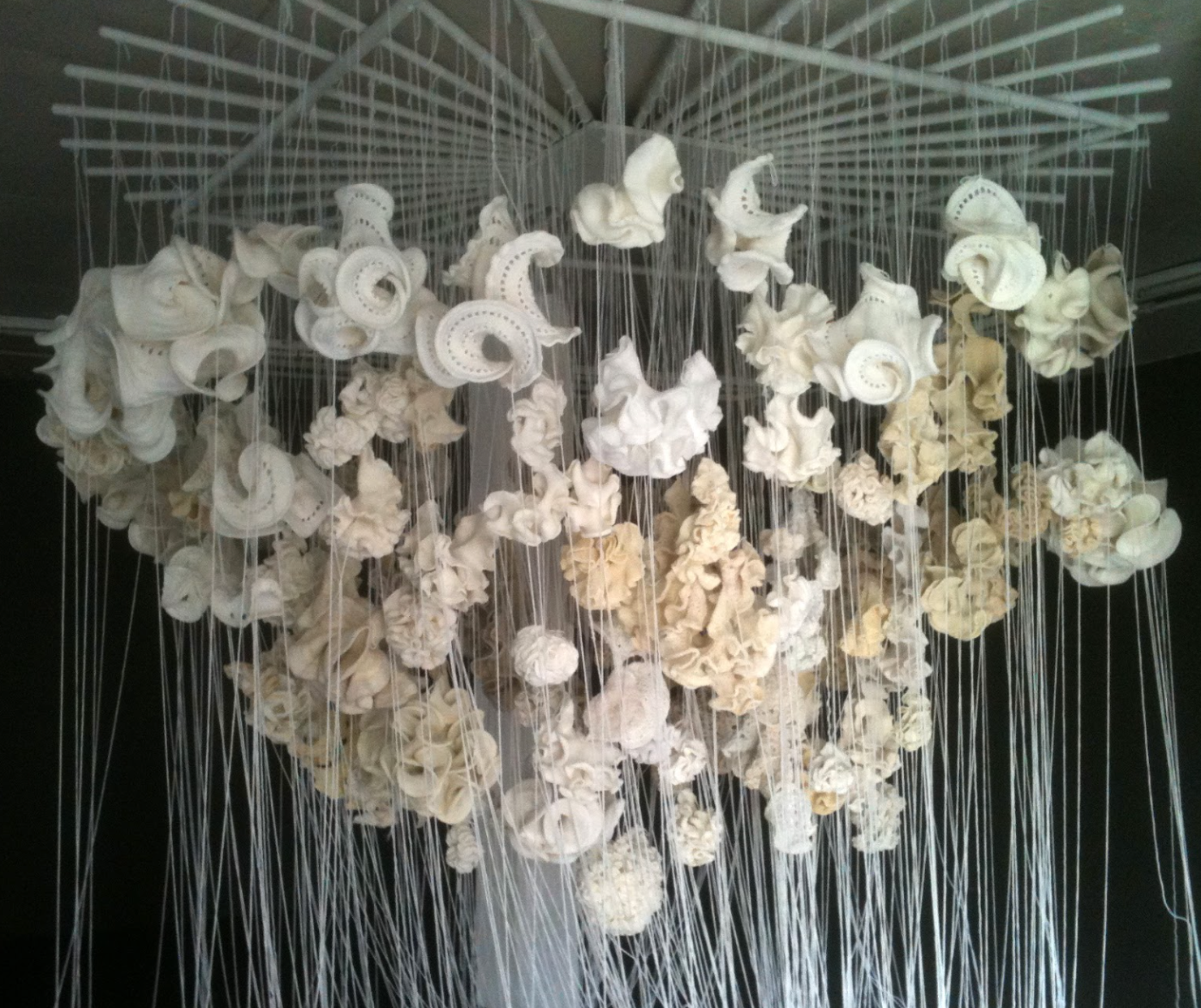
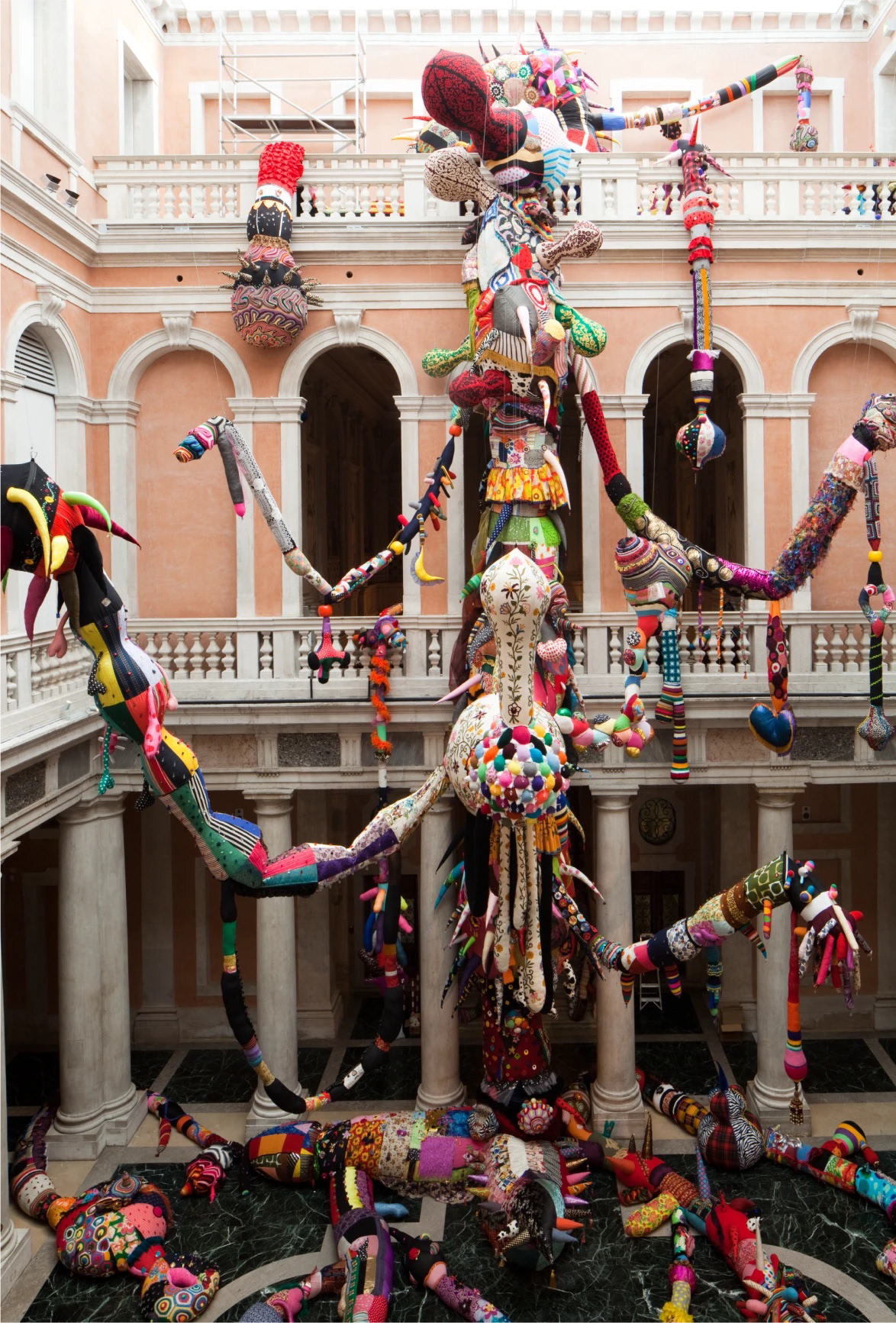

Joana Vasconcelos
A mix of bright coloured yarn and different accessories, Vasconcelos' work is eye catching and normally on a larger scale. Her work looks like it's taking over it's space and gives the impression that it's about to spread. The mix of pattern, texture and materials makes me think about how different materials could create more texture and contrast to my work. Although my work focuses on ceramics and textile, a potential mix of another material could add more contrasting perceptions of the material. How my work interacts with other materials is an interesting avenue I could go down.
Complements - Ashley V. Blalock
Complements is silicon thread that is enclosed using crocheted embroidery thread. The idea of contrasting the two materials or two different weights but that are of the same form is an interesting idea. There is some form of control between the crocheted net that is used as a capsule and the silicon thread, however, the other materials may bulge out more which is what you partly expect when you look at it. It's use of material makes me think as the viewer how am I perceiving it, and would I perceive it the same if I didn't know the materials involved?

Sonia Gomes
Sonia Gomes combines second hand fabric and found objects to create sculptural pieces that are inspired by movement. She says that Brazilian dance does influence the dynamic nature of her work. I really like the use of colour and the way that she uses found objects that are hard and manipulates the soft material around them. Her work with a variety of materials also adds weight to her work and adds to the dynamics.
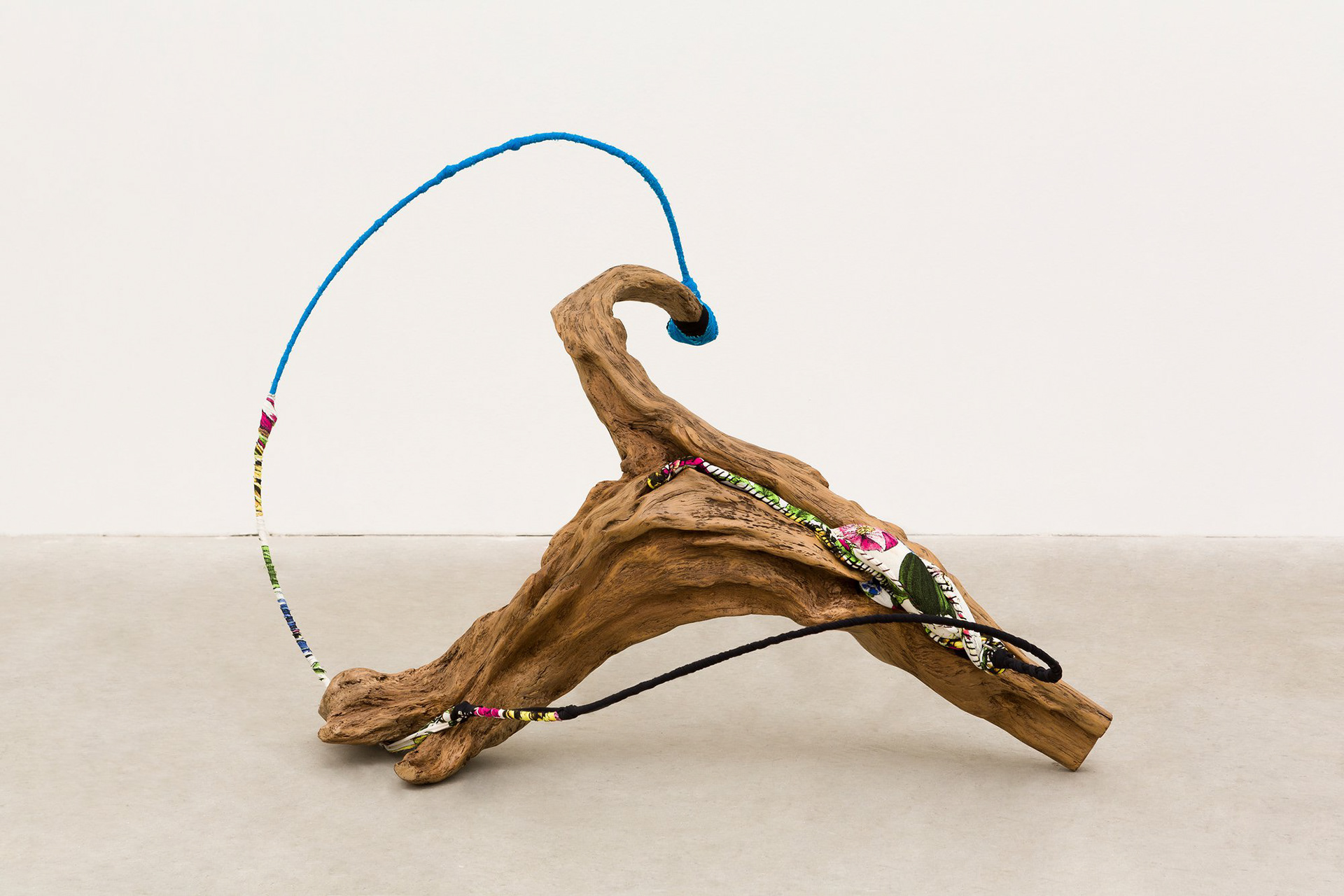
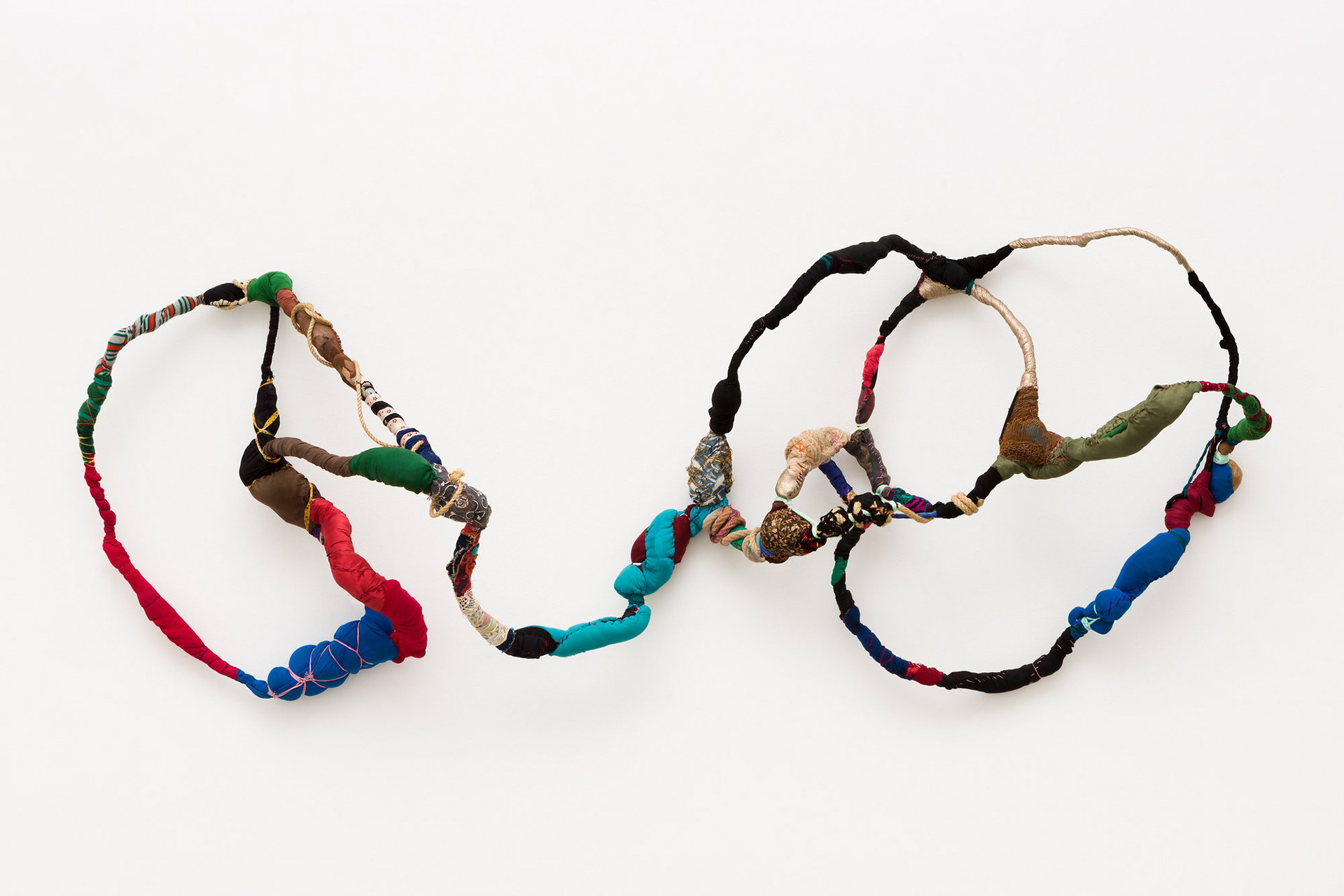
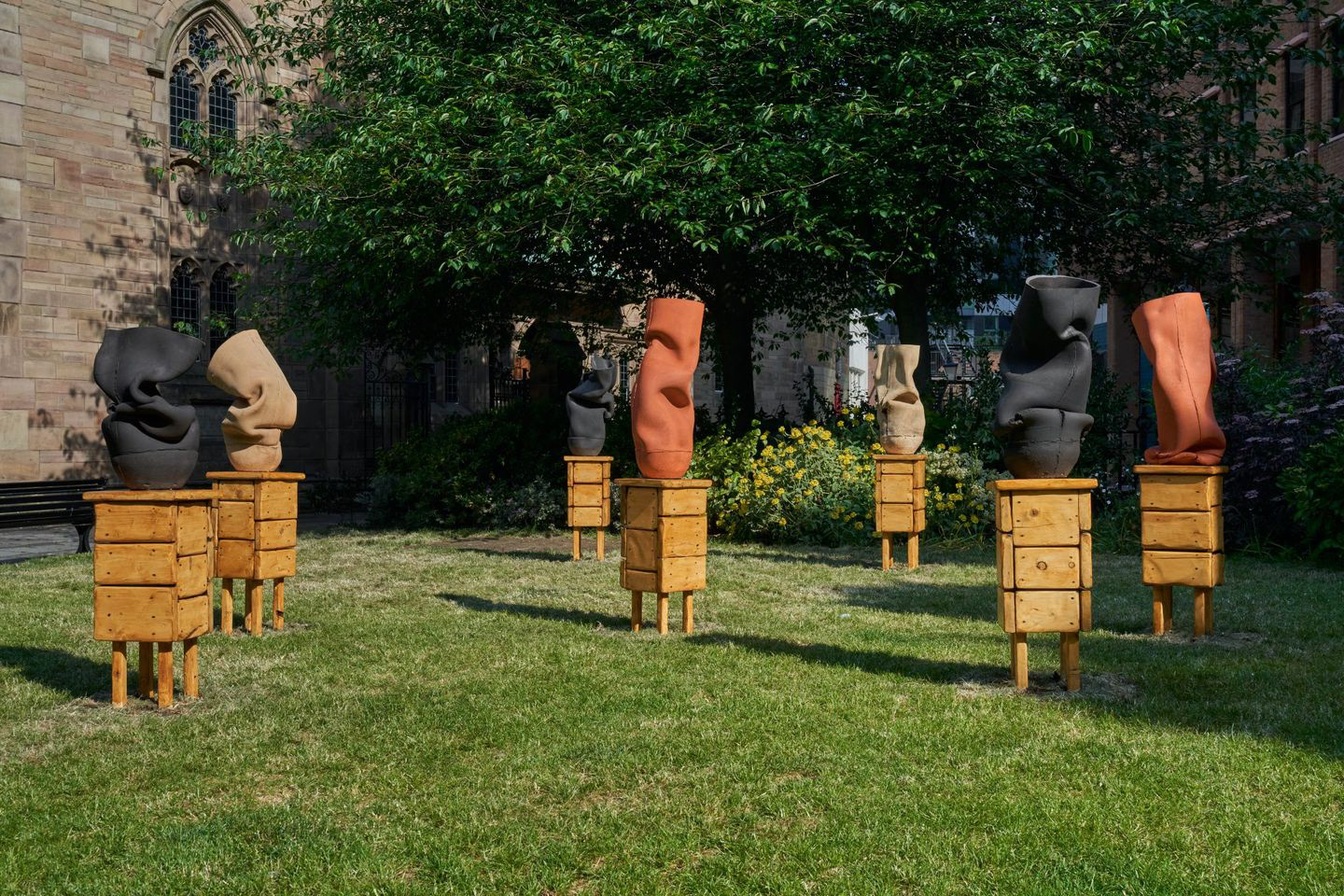
Ranti Bam - 'Ifas'
These pieces by Ranti Bam look like they are heavily inspired by movement, however, these have been made by the artist being still. These pieces are embraced by the artist in order to create the folds and curves within the clay. The curation of the work is also interesting with all the pieces being sat on wooden stools that all look the same. These give the pieces height but also give them rest and that paired with the outside space provides and interesting angle for curation of the piece.
Susie McMurray
Susie McMurray works with multiple materials and I am looking mainly at curation of her objects. Within the first photo the piece seems to sit on a round table which shows that viewers can walk around the work and appreciate every angle of the piece. This is imperative that I show every angle of my work as it is not meant to be seen from a 2D point of view. Within the second photo, the space that the work is being curated in is utilised to hang the work from. I should think about what the space would look like if I was to potentially present the work in a gallery or space, or how my work would work within different spaces as well. The two photos at the bottom seem to be in what I would say an exhibition space which is more aligned with the usual space with white plinths and backgrounds. These spaces allow appreciation of these pieces as sculptures by the way they are sat within the space.
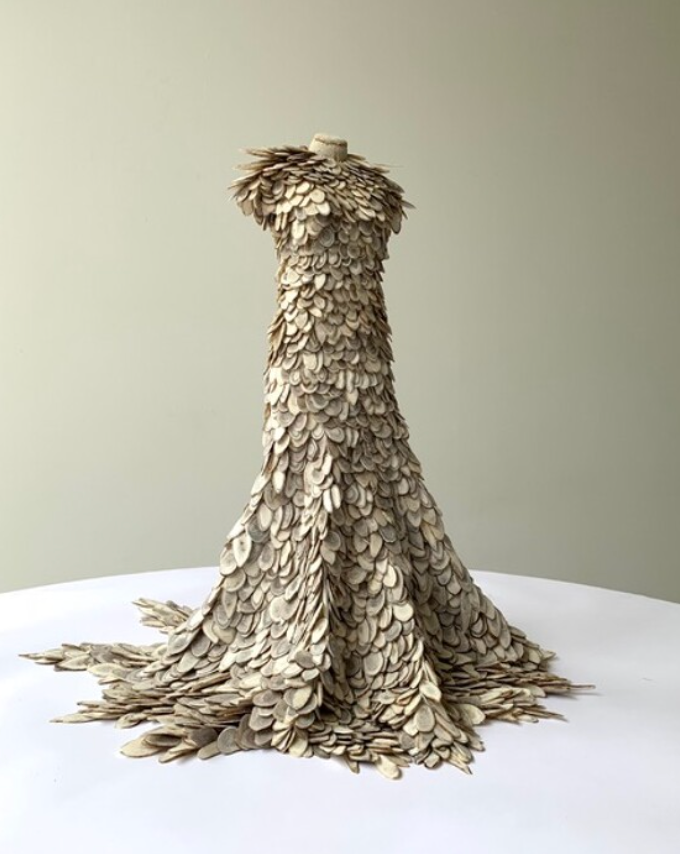



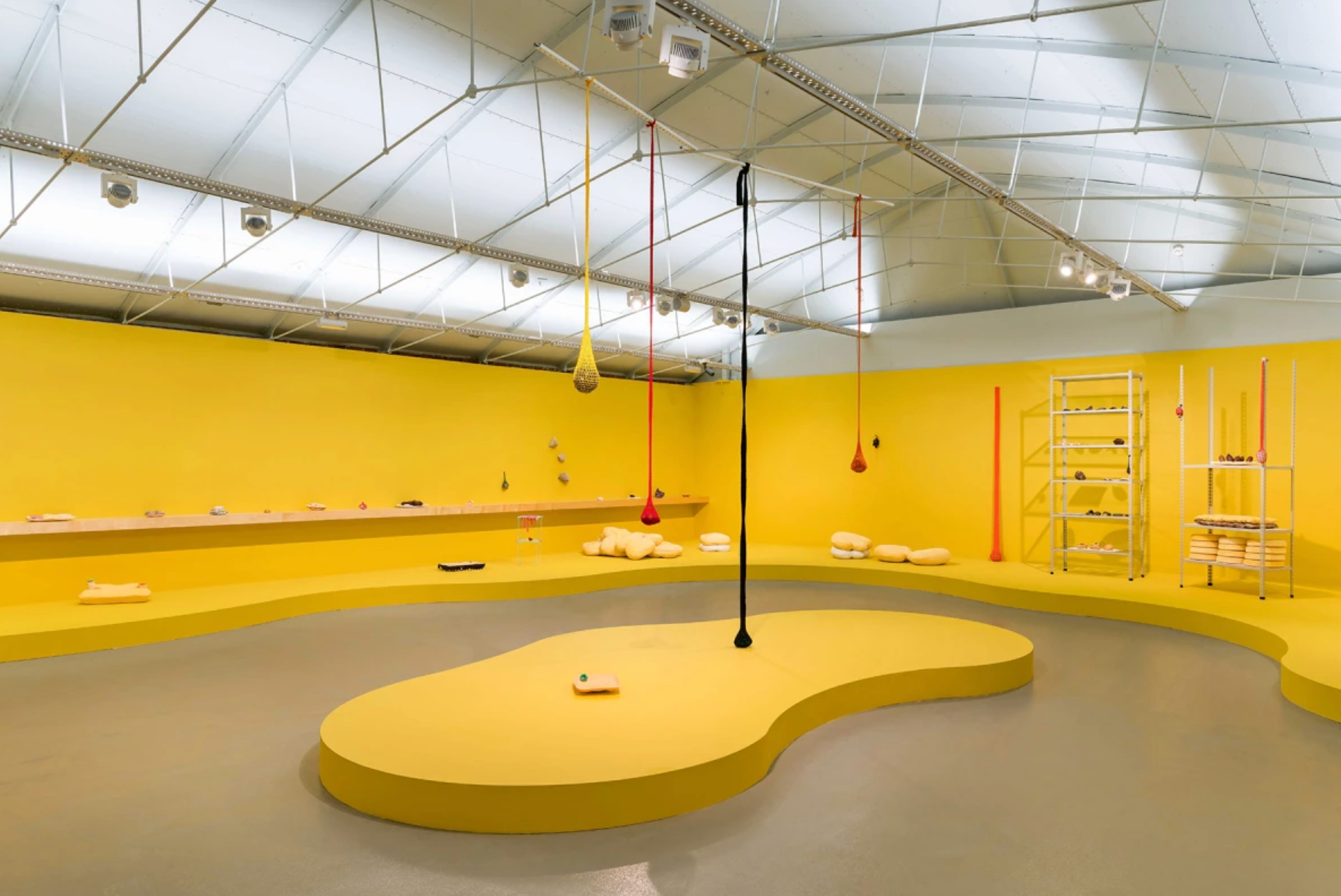
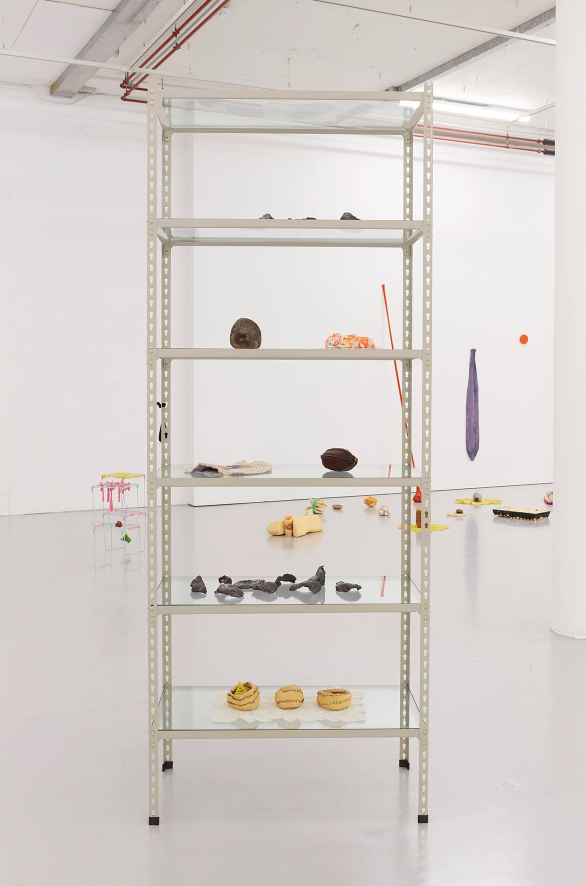
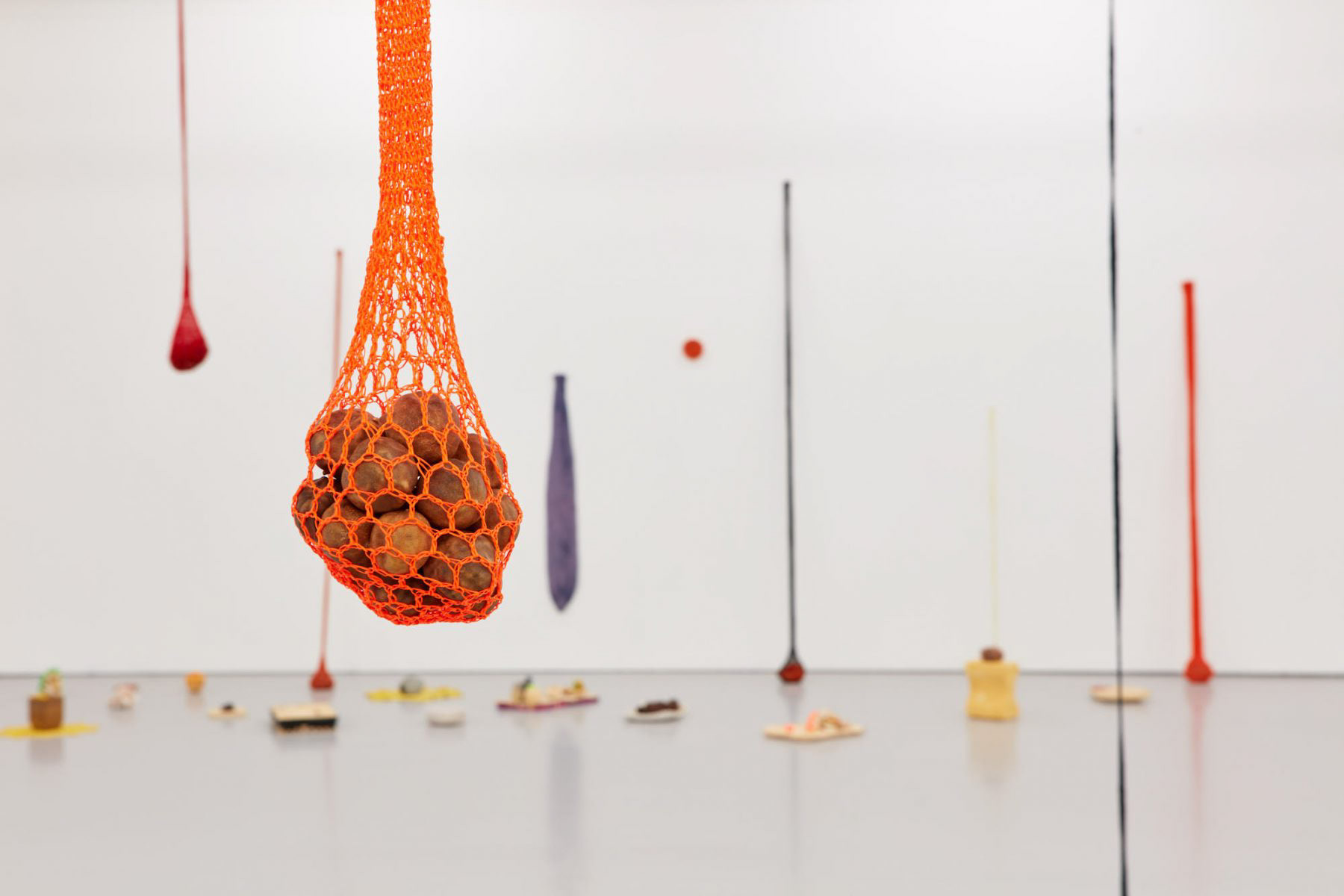

Veronica Ryan
Ryan's work uses multiple ways of showing off her work. Utilising hanging bars, shelving units and different levels. As her work also explores mixed media and different objects and materials that range from hard to soft, it is interesting to see how she has held each one in their own space. The floor level work is small but gives a different angle to what you may usually see and the shelving units give a more compressed view as the objects are nestled between smaller spaces. It is also important to acknowledge that colour works well as they are kept within a vast space, the way you would see the colours in more compact space would be different as they would be more likely to clash or would look different. The yellow walls in the first picture is interesting as it gives a different backdrop to the colours used and I believe makes the oranges and yellow tones pop more than the white walls.